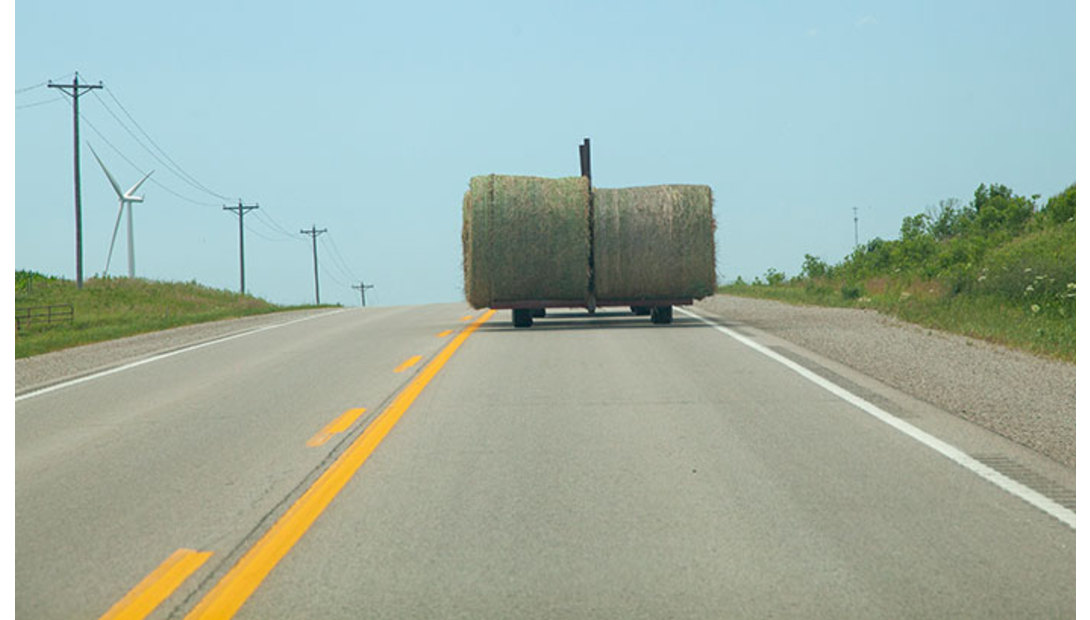Cattle hay consumption hinges on quality |
| By Michaela King |
|
|
|
As the winter months quickly approach, so does the hay-feeding season for many cow-calf producers. Understanding the factors that impact cow hay consumption is key to ensuring an operation has adequate supplies of winter feed. Glenn Selk, an emeritus extension animal scientist with Oklahoma State University, says that estimating hay consumption is influenced by several factors. “Forage quality is a determining factor in the amount of forage consumed,” Selk explains in a recent Cow/Calf Corner newsletter article. High-quality forages contain larger concentrations of nutrients and generally make it easier to meet the nutritional needs of the cow. Additionally, cattle can consume more of a high-quality forage since it ferments at a more rapid rate in the rumen, allowing the cow to refill the rumen by eating additional forage. Selk explains low-quality forages are consumed at a rate of 1.5 percent of body weight per day on a dry matter basis, but higher quality grass hays are consumed at 2 percent body weight. He notes that excellent quality forages, such as good alfalfa or silages, may be consumed on a dry matter basis at a rate of 2.5 percent of body weight per day. For producers, the combination of improved nutrient content along with better forage intake make high-quality forages extremely valuable. With an understanding of these intake relationships, producers can more accurately estimate the amount of hay needed for winter feeding. Selk uses the example of a 1,200-pound pregnant spring-calving cow. The cow will consume 24 pounds of dry matter per day of a good-quality hay containing about 8 percent protein. If the hay is 8 percent moisture, the cow will consume 26 pounds per day on an as-fed basis. Selk also notes that producers need to consider hay wastage. While it can be hard to estimate, the scientist explains it is usually between 6 to 20 percent. In the previous example, he assumes 15 percent hay wastage and calculates that about 30 pounds of grass hay will need to be made available to each cow on pasture daily. This calculation changes based on cattle weight, so having an accurate knowledge of average cow size in a herd is necessary. “After calving and during early lactation, the cow may weigh 100 pounds less, but she will be able to consume about 2.6 percent of her body weight of 100 percent dry matter hay,” Selk explains. “This would translate into 36 pounds of ‘as-fed’ hay per cow per day necessary to be hauled to the pasture, assuming 15 percent hay wastage.” More to consider Not all bales weigh the same, Selk emphasizes. “Diameter and length of the bale, density of the bale, type of hay, and moisture content all will greatly influence the weight of a bale,” he notes. The animal scientist suggests weighing bales using trucks and trailers to get a better understanding of the amount of hay actually being fed. “Utilizing the standing forage in native and bermudagrass pastures to supply much of the forage needs during fall and early winter months will reduce hay feeding,” Selk explains. Eventually, hay will become the primary source of forage, though it is difficult to predict the number of days that hay feeding will be necessary before next spring. Selk suggests making an estimate based on experiences from previous years.  Michaela King Michaela King served as the 2019 Hay & Forage Grower summer editorial intern. She currently attends the University of Minnesota-Twin Cities and is majoring in professional journalism and photography. King grew up on a beef farm in Big Bend, Wis., where her 4-H experiences included showing both beef and dairy cattle. |

